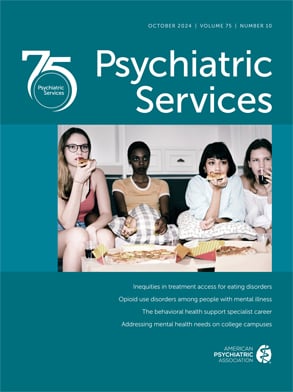In 2004 Robert Simon published his first book on suicide (
1 ). If a Greek philosopher in the pursuit of understanding Truth teaches students in a stepwise fashion, then with this year's
Textbook of Suicide Assessment and Management, Simon and coeditor Robert Hales advance clinical psychiatry one step closer toward a clearer understanding of the complicated tragedy of suicide.
In the forward, Stuart Yudofsky summarizes the text's objectives as answering the following three Socratic questions for the clinician who suffers a tragic loss of a patient by suicide: What did I miss? What could I have done to have prevented this tragedy? What are the implications of the suicide to me as a professional?
The benefit of observing the Greek tragedy is so that the audience can go home after the show and not repeat the mistakes of the main character. In this same manner, the learning opportunity for the clinician is that reading this text will result in improved patient care to prevent the repetition of the tragic story of suicide for the next person served.
Simon and Hales bring 50 expert authors together, each addressing clinically salient topics. Chapters address the knowledge base thoroughly, crystallizing content around case studies and ending on "pearls of wisdom," which are presented as key points. The subject matter is organized to answer Yudofsky's questions in three sections. Part I addresses suicide risk assessment, including special population issues ranging from pediatrics to geriatrics, and considers gender issues and even concerns for psychiatric services in correctional settings.
Part II covers treatment and addresses somatic therapies as well as strategies for successful service to persons in split-treatment settings. This second section of chapters also focuses on the pragmatic nuances of treatment for persons with specific disorders, ranging from mood disorders to personality disorders. Attention is also given to service settings, from outpatient treatment to the emergency department to inpatient level of care.
Finally, the editors organize expert discussion on the response after a patient commits suicide. Discourse ranges from personal coping to family support to legal issues. Patient safety and risk management are discussed as well as additional special topics, including murder-suicide and forensic issues. The book closes with provision of the executive summary recommendations from the American Psychiatric Association (APA) practice guideline on suicide with case examples (
2 ).
A colleague at a recent APA meeting commented, "No one has time to read books. Residents and clinicians want handbooks." This text can be seen as a user-friendly, up-to-date, definitive encyclopedia, with each chapter being a handbook applicable not just to the trainee but also to the attending physician. Although some chapter titles refer to the discipline of psychiatry, this is a text with utility for all clinicians.
Not only is suicide the top-reported Joint Commission on Accreditation of Healthcare Organizations sentinel event in all hospitals around the country, it is also the single most common cause of malpractice claims against psychiatrists. Simon comments that "a psychiatrist can best reduce the malpractice risk from patient suicide in a straightforward manner—practice evidence-based psychiatry." This text successfully provides clinicians with the evidence base. As a psychiatric administrator with an awareness of the gap between the evidence base and clinical practice, one question remains of interest to me: How can I best support a mental health system so that failure modes associated with suicide can be overcome by implementing and maintaining high-quality, evidence-based suicide risk assessment and risk reduction? This text's excellence has me looking forward to a third book on this topic by Simon.

